Table of Contents
Johan Cruyff: Manager’s Profile
It is difficult not to admit the huge influence that the Dutch football legend Johan Cruyff had on football. From his time as the star player of Ajax, Barcelona and the Dutch national side, to his time in management at the same clubs, Johan Cruyff was always one step ahead of his time in regards to football development. He was a football philosopher. His vision was to evolve the game but at the same time he always wanted to compete, to win.
As a football player, he won three consecutive Champions Cup winners with the great Ajax of the 1970s, and a World Cup final with the Netherlands in 1974. His greatest individual achievement was the the winner of the Ballon d’Or three times. All of that is enough to guarantee that he is rightly considered one of the greatest players who ever played the sport.
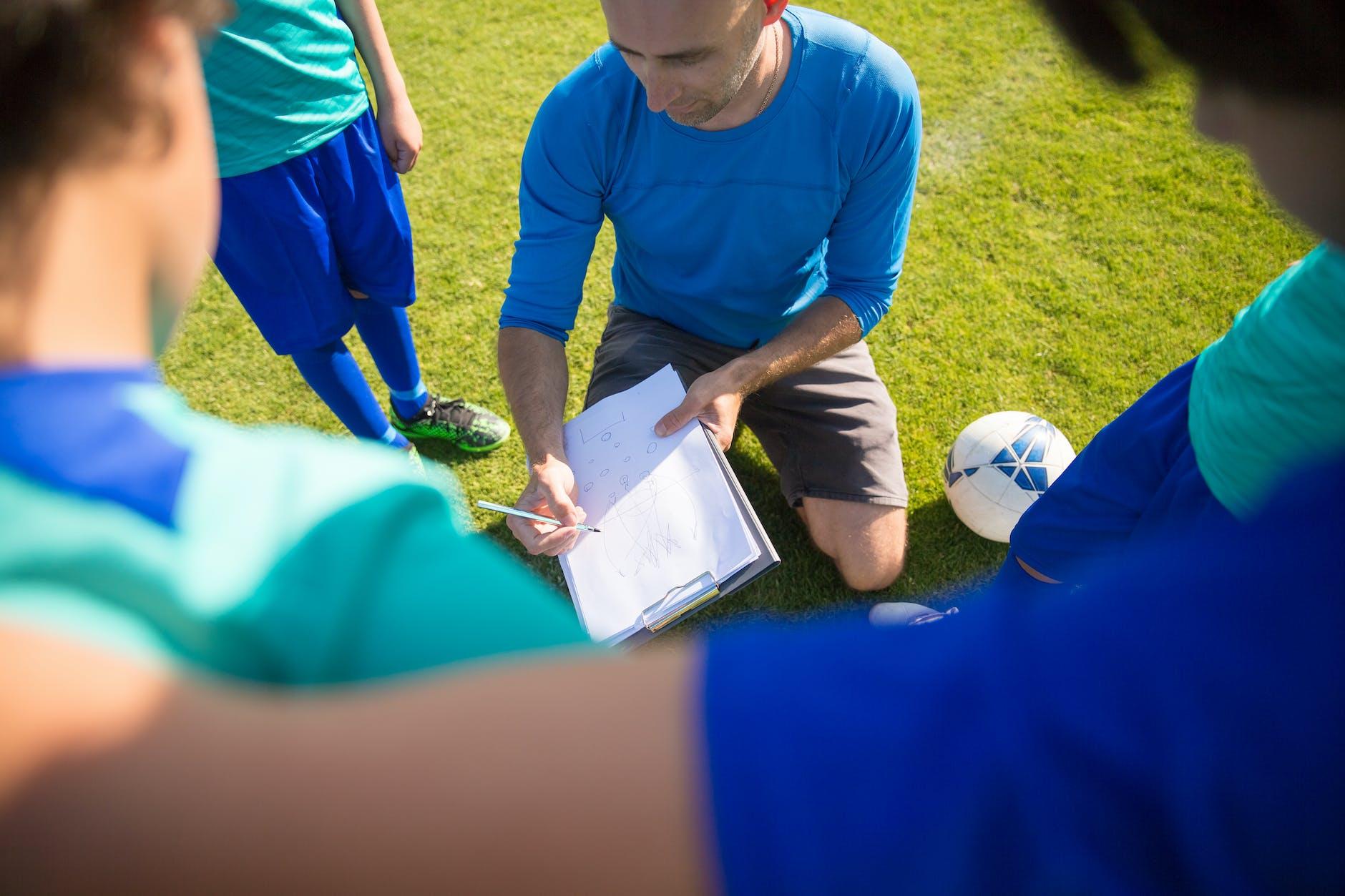
Elevate Your Coaching Journey
Are you ready to take your coaching career to the next level? Look no further than FootballCoach365, your ultimate destination for top-notch coaching material.
Join the Coach’s Corner today and experience the transformative power of coaching and mentoring.
Coaching Career
During his coaching career, he was always looking for ways for his teams to play an attacking, attractive football. Possession-based and attractive style of play, make his legacy to grow even more. Johan Cruyff during his relatively short managerial career (approximately 10 years), managed only two teams, the team he supported in his boyhood, Ajax (1985-1988) and Barcelona between 1988 and 1996.
With Barcelona he built a squad of serial winner. With his team he won four consecutive Spanish league titles between 1991 and 1994, and his most glorious silverware, the 1992 European Cup. The 1992 team was also known as the Dream Team (a term lend from the USA National Basketball team in order to emphasize the Barca’s superiority over any opponent during the specific year).
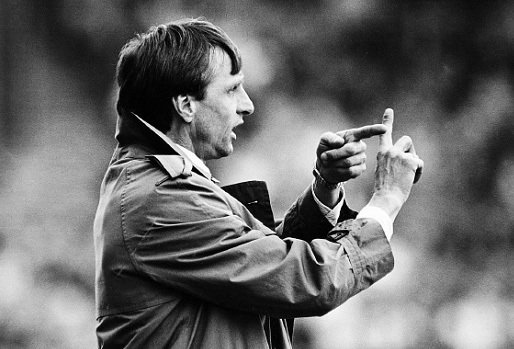
Johan Cruyff based his philosophy on the Total Football methodology. He had practiced this style of game as a player in the great Netherlands team of Rinus Michels.
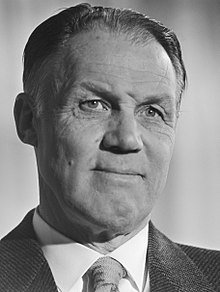
Possession of the ball, mobility, positional rotations and use of the whole pitch were the trademarks of Johan Cruyff coaching philosophy.
“Football basically consists of two things. First, when you have the ball, you must be able to pass it properly. Second, when the ball is passed to you, you must be able to control it. If you do not control it, you cannot pass it either.”
Rinus Michels
Johan Cruyff: Game Play Philosophy
Johan Cruyff was not just a football philosopher aiming to play good attractive football.
His main priority was always to win, like any coach who completes at an elite level. His belief was that the best way to win was through an offensive style of play, an attacking-minded behavior. The effort was to dominate every single game in all four phases (attack, defense and transitions)
Ball Possession
His obsession with ball possession directed him to develop a game model based on triangles and rhombus. Each player, regardless of his location on the pitch, had to position himself to form a triangle or rhombus. He considered this the ideal shape for his team to maintain the ball possession. Aby on ball player should have two or three options.
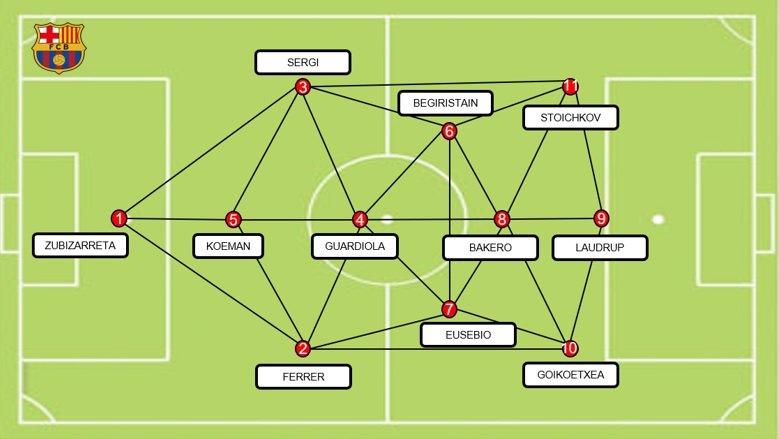
This diamond-based structure, using a 3 – 4 – 3 formation, was based on positional football. Cruyff during that time had difficulties making it simple for the others to understand. It was possible only as long as his players shared the same thoughts about the game. An understanding that helped them to decide when to come close to their teammates by offering near passing options, and when not to by moving away and creating free space for them to take away the opponents.
Possession of the ball without clear intentions to attack did not interest Cruyff. He wanted his players to understand that in order to safely progress forward they should keep moving the ball. This was the main way to disorganize the opposition and create the spaces that would allow them to penetrate into dangerous areas.
Maintain the structure
At the same time, Johan Cruyff wanted his team to keep a compact block either while attacking or defending. This would allow constant positional rotations and exchanges, and enable easier and faster pressing when losing the ball possession. And the closer the distances between the players were, the easier regains would be even in the opposition half.
Based on all of these concepts, Cruyff relied, in his time at Barcelona, on two tactical formations: the 3-4-3 and the 4-3-3. The change between the two formations was easy. Dropping back Guardiola to a defender’s position and the two attacking midfielders to defensive midfielder’s positions.
Attacking Phase: Johan Cruyff’s favorite phase of the game
Johan Cruyff believed that the first attackers were the defenders and the goalkeeper and the first defenders were the forwards. The composition of the defense with the utilization of players who possessed good passing and dribbling skills was non-negotiable.
He chose an unorthodox back three, an attacking-minded trio: one single central defender – Ronald Koeman or Miguel Angel Nadal – and two right and left center-backs, Albert Ferrer and Sergi Barjuán or Juan Carlos. The center-backs, however, pushed up and join the attack with every opportunity.
That meant, on many occasions, the defensive line had only one central defender and the defensive pivot – usually Pep Guardiola. None of these were players known for their physical condition characteristics. Barcelona was so good in keeping the ball possession and in pressing the ball when it was lost. Even if leaving 2 players at the back to defend against a counterattack was a high risk, in reality, the team was exposed limited times.
The defender’s roles
The role of the wide center-backs was fundamental because it allowed the team to widen the pitch. Ferrer and Sergi pushed up as traditional wide players, which offered the opportunity to the wingers – usually were Stoichkov and Goikoetxea – to move into more central areas. They could create overloads in the internal spaces and at the same time connect easier with the center-forward Michael Laudrup.
Jurgen Klopp reborn some of the concepts with his Liverpool side. Trent Alexander-Arnold and Andy Robertson often provide the width so Sadio Mané and Mo Salah can get inside into dangerous half-spaces. Of course, on Liverpool’s side, the two or three central midfielders are responsible for offering the defensive coverage along with the two central defenders.
Another option for the wide center-backs was to advance into central areas. This didn’t just give the wide attackers more space; with Sergi and Ferrer encouraged to come inside (below), it also gave the midfield pivot more passing options nearby. The inverted full-backs is something that Pep Guardiola has utilized a lot in the last few years while coaching the Manchester City side. The hybrid full-backs like Walker, Cancelo and Zinchenko offer so many possibilities during the build-up for the Blues.
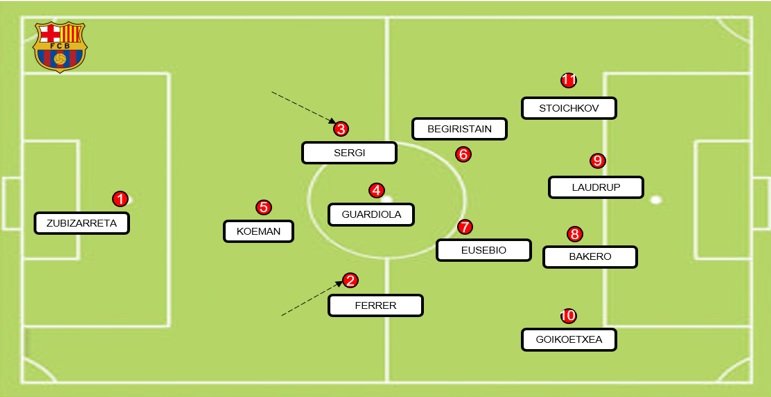
The brilliant Michael Laudrup
One of Cruyff’s greatest achievements in regard to individual player development was the developing role of Danish Laudrup. He transformed Laudrup into a false nine, a concept that Guardiola restored with Lionel Messi.
Laudrup had the technical skills of a midfielder. One of his responsibilities was to drop back into the center of the pitch offering passing options to his teammates creating numerical and positional superiorities. He possessed the ideal virtues for the positional playing style that Cruyff so desired.
Laudrup was a player with an increased sense of positioning. He understood what happened around him, identify the free spaces, and where to positioned himself based on his teammate and opponents to be more valuable to his team.
The fluid movement of Laudrup disorganized his opponents. The opponent’s backline had two options to decide. The first one was to follow Laudrup who dropped back. In that situation, the wingers had the chance to attack the free space that was created. The second option was to keep their positions. Laudrup was then a free player in the center of the pitch who could receive the ball and act as an additional playmaker.
This didn’t mean that the traditional role and responsibilities of the central striker were totally banished. Cruyff managed to use, except mobile forwards, more traditional forwards-goal scorers such as Romario and Julio Salinas. These players usually preferred to play near the penalty box where they were more dangerous. In the 992 European Cup final victory over Sampdoria at Wembley he started Stoichkov and Salinas in a front two. Laudrup was operating behind them.
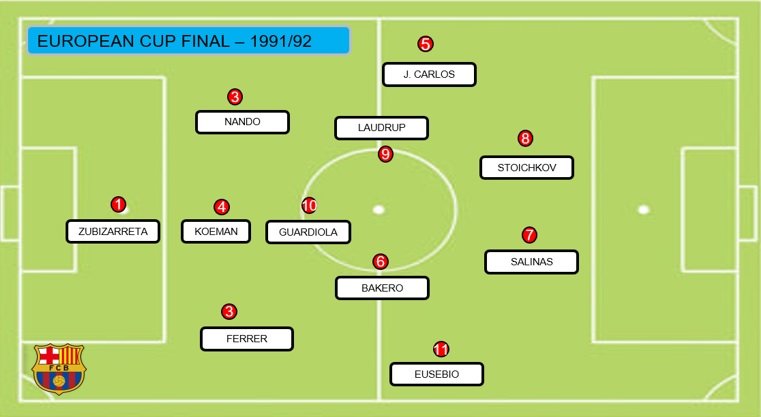

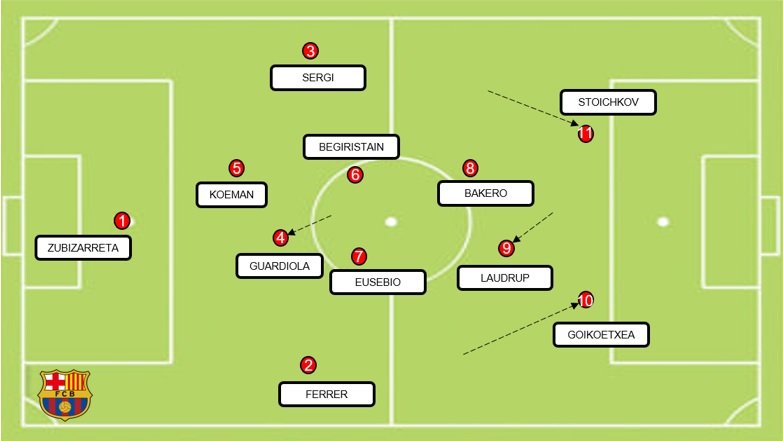
By using a false nine, or inverted backs or inside wingers what Cruyff managed was for his players to have short distances between them that helped the ball circulation but also the counter-pressing upon losing the ball. The result was longer ball possession but also faster ones.
Flexibility – Fluidity – Adaptaptiblity
Against teams who pressed high, Cruyff’s team had additional options besides the short passing game. Goalkeeper Andoni Zubizarreta could play a medium-range pass into the defensive pivot or hit a long pass to one of the wide players. Koeman had one of the strongest feet and he was well known for his powerful shots.
Besides that, his long ball accuracy was so important for Barcelona during the build-up because he could bypass many defenders with a single switch of play. The receiver could then go on 1 v 1 with his marker or look to combine with the nearest teammates.
If opponents positioned themselves in a low block, the build-up would always start with a short pass from the goalkeeper to Koeman or Guardiola. The full-backs, based on the situation and the opponent’s formation, could push on wide or get inside in more central areas. When the ball is attacking half, the players who were located near the ball possessor had to offer clear passing options to help the safe ball circulation.
The responsibilities of the players on the opposite side of the pitch were to maintain their positions in order to force the opponent’s lines to stretch and create gaps in between them or in case they chose to shift to one side, the far-away wingers will have free space in case of a switch of play.
In the summer of 1993, Romario was brought to Barcelona. The team adopted a more traditional behavior. The team was forced to move based on his positioning on the pitch to take advantage of his lethal skills. This considerably modified Cruyff’s model, providing it with a goalscorer in the penalty area but limiting some of the team’s previous dynamics outside and around it.
Defensive Phase
Defend by attacking. That was the core of Cruyff’s philosophy, and why his predisposition towards attacking play was so strong.
Transforming the formation from 3 – 4 – 3 to 4 – 3 – 3
In situations where Barcelona did withdraw into a low block, Guardiola used to drop and operate as a second center-back. The full-backs would then occupy more traditional defensive positions. The in-possession formation 3-4-3 converted into a more familiar 4-3-3 in the defensive phase.
There were games in which the team’s initial formation was 4-3-3. On that occasion, the defensive midfielder was already in a central position. The benefit of that would be to operate in a more natural environment. In the 1994 Champions League final against the Italian side AC Milan, Cruyff designed his strategy using a more traditional 4 – 3 – 3. Guardiola played as a pivot occupying the space in front of the defensive duo, Koeman and Nadal.
Don’t lose the ball
His idea regarding the defense had to do with the positioning of the players, especially during the attacking phase, rather than any physical abilities. The most iconic proof of this was the use of Guardiola as a defensive midfielder, a technician rather than a runner. Cruyff strongly believed that the correct positioning of his players while they attack, would allow for more prolonged and effective possession and also a quick recovery of the ball.
“If you don’t lose the ball in the build-up, it’s very difficult to be counter-attacked”
Johan Cuyff
Of course, even his teams lost the ball sometimes. When they did, because of the way he set up (players spread on the pitch), counter-attacks was a real danger. The near players when losing the ball tried to immediately press but if that was unsuccessful the danger was big. The players who kept a wide position in order to stretch the opponents, was impossible to get behind the ball to defend.
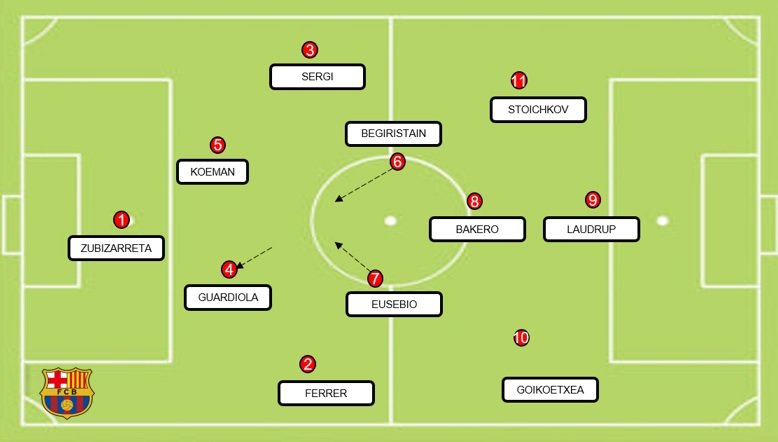
In the 3-4-3, Guardiola moved back to take the position of a second central defender during the defensive phase. The team then had a skillful ball player and along with Koeman, Barca was able to smoothly play out from the back in case they regained the ball possession. However, having a non-defender operating in the defensive line was a great risk. Any mistake resulting from opposition pressing could transform almost immediately into a goalscoring opportunity.
The importance of the goalkeeper
Zubizarreta was a traditional goalkeeper who was not feeling comfortable playing with his feet. Under pressure, he usually preferred to play long balls without a clear receiver rather than looking for the nearest teammate. Johan Cruyff wished his goalkeepers to be involved in the build-up.
He wanted to be able to pass the ball correctly but also to always be a passing option for his teammates. The usual situation was that he would be an option when his teammates would be under pressure, so a pass back to the goalkeeper contained a high risk. Zubizaretta was not that, but we can see the influence of Cruyff’s ideas in Guardiola’s teams with the most glaring example of current Manchester City keeper Ederson, who has the passing range of an outfield player.
Johan Cruyff’s belief in Youth development
“It all starts with the youth. It has to be fun for them or it makes no sense. Young players are eager to learn and they will dream of playing on the first team, so motivation is already in place. If you have proper training and coaching in place, then these youngsters will learn to dominate the ball and also learn about position play.”
Johan Cruyff
He strongly believed that a club’s youth teams should adopt the same style as the first team. For that reason when he arrived in Barcelona he put much of his time and energy into helping La Masia. The benefits were huge.
Pep Guardiola, probably his favorite player, was one of La Masia’s graduates. He made his debut in the first team under Johan Cruyff. Not only that but he became one of the core individuals of the great Dream Team. The emphasis should be on the learning side instead of just winning games.
The youth coaches should not be so much concerned with winning rather than implementing the club’s fundamentals and philosophy. To make sacrifices in the present in order to gain the maximal potential growth of a player in the future is a must. Cruyff had the ability to look beyond short-term results and see better long-term results. For decades he consistently worked on his philosophy and eventually, he left a legacy, still influencing the beautiful game in present times.

